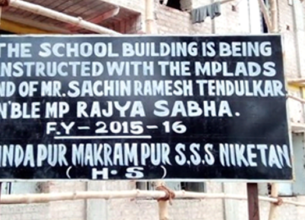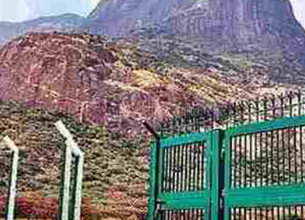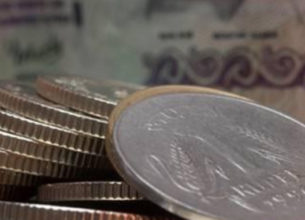PM LAUNCHES SWAMITVA YOJANA ON PANCHAYATI RAJ DIWAS
27, Apr 2020

Prelims level : Schemes
Mains level : GS-II Government Policies and Interventions for Development in Various Sectors and Issues Arising out of their Design and Implementation.
Why in News?
- On Panchayati Raj Diwas (April 24th), the Prime Minister of India launched ‘Swamitva Yojana’ or Ownership Scheme to map residential land ownership in the Rural Sector using Modern Technology like the use of drones.
About Swamitva Yojana:
- The scheme is piloted by the Panchayati Raj ministry that aims to revolutionise property record maintenance in India.
- The residential land in villages will be measured using drones to create a non-disputable record.
- Property card for every property in the village will be prepared by states using accurate measurements delivered by drone-mapping. These cards will be given to property owners and will be Recognised by the Land Revenue Records Department.
What would be the Benefits of the Scheme?
- The delivery of property rights through an official document will enable villagers to access bank finance using their property as collateral.
- The property records for a village will also be maintained at the Panchayat level, allowing for the collection of associated taxes from the owners. The money generated from these local taxes will be used to build rural infrastructure and facilities.
- Freeing the residential properties including land of title disputes and the creation of an official record is likely to result in appreciation in the market value of the properties.
- The accurate property records can be used for facilitating tax collection, new building and structure plan, issuing of permits and for thwarting attempts at Property Grabbing.
What is the Significance of the Scheme?
- The need for this Yojana was felt since several villagers in the rural areas don’t have papers proving ownership of their land.
- In most states, survey and measurement of the populated areas in the villages has not been done for the purpose of attestation/verification of properties.
- The new scheme is likely to become a tool for empowerment and entitlement, reducing social strife on account of discord over properties.
About Panchayati Raj:
- After the Constitution came into force, Article 40 made a mention of Panchayat and Article 246 empowered the state legislature to legislate with respect to any subject relating to local self-government.
- Panchayati Raj Institution (PRI) was constitutionalized through the 73rd Constitutional Amendment Act, 1992 to build democracy at the grass roots level and was entrusted with the task of rural development in the country.
- PRI is a system of rural local self-government in India. Local Self Government is the management of local affairs by such local bodies who have been elected by the local people.
About the 73rd constitutional Amendment:
- The 73rdConstitutional Amendment added Part IX titled “The Panchayats” to the Constitution.
- Basic unit of democratic system-Gram Sabhas (villages) comprising all the adult members registered as voters.
- Three-tier system of panchayats at village, intermediate block/taluk/mandal and district levels except in States with population is below 20 lakhs (Article 243B).
- Seats at all levels to be filled by direct elections Article 243C (2).
- Reservation of Seats:
- Seats reserved for Scheduled Castes (SCs) and Scheduled Tribes (STs) and the chairpersons of the Panchayats at all levels also shall be reserved for SCs and STs in proportion to their population.
- One-third of the total number of seats to be reserved for women.
- One-third offices of chairpersons at all levels reserved for women (Article 243D).
- Uniform Five Year Term and elections to constitute new bodies to be completed before the expiry of the term.
- In the event of dissolution, elections compulsorily within six months (Article 243E).
- Independent Election Commission in each State for superintendence, direction and control of the electoral rolls (Article 243K).
- Panchayats have been authorised to prepare plans for economic development and social justice in respect of subjects illustrated in Eleventh Schedule (Article 243G).
- Source of Revenue (Article 243H):State legislature may authorise the Panchayats with
- Budgetary allocation from State Revenue.
- Share of revenue of certain taxes.
- Collection and retention of the revenue it raises.
- Establish a Finance Commission in each State to determine the principles on the basis of which adequate financial resources would be ensured for panchayats and municipalities (Article 243I).
- The following areas have been exempted from the operation of the Act because of the socio-cultural and administrative considerations:
- Scheduled areas listed under the Schedule V in the states of Andhra Pradesh, Bihar, Gujarat, Himachal Pradesh, Madhya Pradesh, Maharashtra, Orissa and Rajasthan.
- The states of Nagaland, Meghalaya and Mizoram.
- The hill areas of the district of Darjeeling in the state of West Bengal for which Darjeeling Gorkha Hill Council exists.
- However, an Act called the Provisions of Panchayats (Extension to the Scheduled Areas) Act, 1996 passed by the Government of India for the mentioned scheduled areas.













